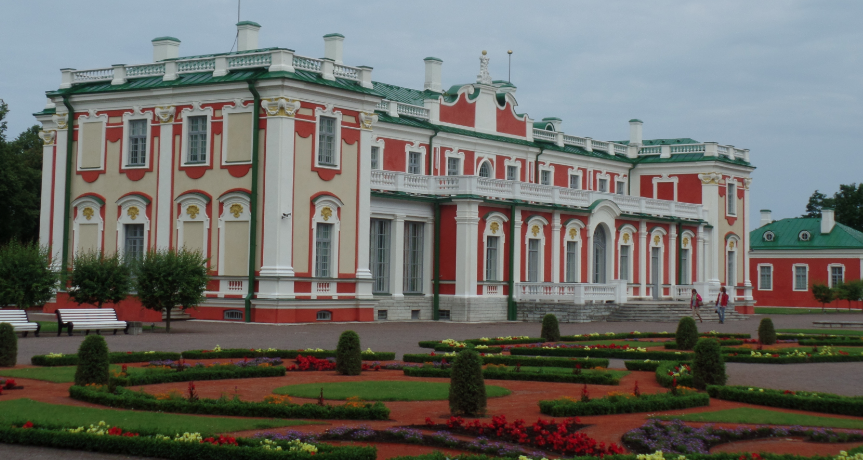
Smooth Traveler by Renée S. Gordon
“I say to you: sing! Sing when it goes well for you. But most of all, sing when you must overcome outrage. Sing into the eyes of him who slanders you. Chant out your victory.” – Imants Ziedonis
The Baltic Sea is located in Europe and touches the coasts of Denmark, Estonia, Finland, Germany, Latvia, Lithuania, Poland, Sweden and Russia but the countries most recognized as Baltic countries are Estonia, Latvia and Lithuania. The Baltic Sea is nearly 150,000-sq. miles in size and 1,000-miles long and for thousands of years people have entered the region to settle, invade, conquer and trade because of its location. Through it all each of the Baltic countries has managed to maintain a separate and unique culture and this, along with modern infrastructure, first class dining and accommodations, and huge swaths of pristine forests and beaches, has jettisoned the Baltics to the top of the list of must-see tourist destinations.
Tacitus, a Roman historian, who wrote of them as the Este from a land known as Aestui, made the earliest written reference to Estonia followed by a reference in 1154 by Arab cartographer Muhammad al-ldrisi. In the 12th-century Chronican Livonia the region is referred to as Estonia. www.visitestonia.com/en
Estonia was ruled by various powers until the War of Independence (1918-20). They maintained their freedom until 1939 when the Nazi Soviet Pact placed the three Baltic countries under the control of the Soviets. One year later the Soviets marched into Estonia, put their people in government positions and occupied and annexed the country making it part of the USSR. The Soviet Union quickly embarked on a reign of terror liquidating leaders in the military, arts, government and business, deporting more than 30,000 citizens to labor camps in Siberia and forcing up to 50,000 men into the Red Army.
In July of 1941 soldiers from Nazi Germany took over the country, more than 8,000 Estonians were murdered and the Nazis set up concentration camps to house Jews and war prisoners. Estonians were conscripted into the German Army in 1942. German occupation ended in 1944 and the Soviets returned once again deporting Estonians to Siberia and colonizing the country with Russians. All told more than 100,000 Estonians died as a result of the dual occupations. A movement began in the 1980’s to restore Estonian freedom and as a result they once again became an independent nation in 1991. Currently Estonia is a democratic nation and a member of the European Union (EU).
The Historic Center of Tallinn, Estonia’s capital, was designated a World Heritage Site in 1997, and revised in 2008, based on the fact that it is among the most intact and well-preserved medieval cities that surround the Baltic Sea. Archeological evidence points to the fact that there was a wooden fortification in the area by the 10th-century. The first written mention of Tallinn dates from a 1219 invasion by the Danes and German crusaders who erected a castle on Toompea Hill. The settlement was called Tallinn, or “taani linnus”, meaning Danish castle and this early mention makes it the oldest capital city in Northern Europe. The colony became a busy trading center and in 1248 it joined other European trading towns in the Hanseatic League.
To date the city maintains, to a major degree, its medieval structures, street plan and panoramic city view from both land and sea. The 279-acre UNESCO protected portion of Tallinn includes Toompea Hill (Upper Town), All-linn (Lower Town) and the medieval and 17th-century fortifications and walls. The limestone walls extend more than one mile and encompass 20 of the original 66 towers and 2 gates.
Tallinn tours usually begin in Town Hall Square, scene of festivals fairs and events for hundreds of years, is still the liveliest area in the city. A plaque marks the spot where in 1441 the guild of the Brotherhood of the Blackheads erected a Spruce tree on the square for the holidays making it the first public Christmas tree in Europe and each year a Christmas Market is held there. A round stone in the square indicates the ideal place to stand in order to see all of the five remaining medieval church spires.
The Gothic Town Hall was completed in 1404 for the burgermeisters. Old Thomas, the city’s iconic weathervane, has stood atop the 210-ft. tower since 1530. The current one is his 3rd incarnation.
The Raeapteek, Europe’s oldest continuously operating pharmacy, opened on the square in 1422. One room inside serves as a small museum displaying health care artifacts and the Burcharts’ family coat-of-arms from 1635. Raeapteek.ee
St. Olav’s Church was from 1549-1625 the tallest building in the world. At that time the spire reached a lofty height of 521-ft. A spiral stair takes visitors to the top for a spectacular view.
The House of the Brotherhood of the Blackheads is the most decorative of the Renaissance guildhalls. The Blackheads were an unmarried German guild responsible for Tallinn’s defense. They took the name of their patron saint, Mauritius, a 3rd-century blackamoor who was a Roman legionnaire and was martyred in Switzerland. He was the first black saint and St. Moritz is also named after him.
Bernt Notke’s famous painting, “Danse Macabre,” is showcased in the St. Nicholas’ Church Museum and a visit is mandatory. The church dates from 1230, was looted in 1523 and was one of 8,000 city buildings destroyed by 3,000 bombs on March 9, 1944. It was reconstructed and is a medieval art museum presenting musical events, concerts and special programs. The 23’ by 6.5’ “Dance of Death” is the most notable artwork in the city. nigulistemuuseum.ekm.ee/en
In the midst of Freedom Square stands the $6.5-million Monument to the War of Independence erected to commemorate those who fought for freedom from 1918-20 in 2009. The column, topped by the Cross of Liberty, is 403.5-ft. in height.
Upper Town has traditionally been fortified and the power structure’s center. Toompea Hill has several significant sites and two viewing platforms that afford visitors stunning views of winding cobblestone streets and the noted red-tiled roofs of the town. Highlights of the Upper Town are Pikk Herman Tower, Toompea Castle, now the home of the Riigikogu, Parliament, St. Mary’s Cathedral dating from the 1200s and the Russian Orthodox Alexander Nevsky Cathedral built in 1900. Tall Herman Tower is a potent symbol of Estonia originally erected in 1371 and rebuilt in 1500 to its present 150-ft.
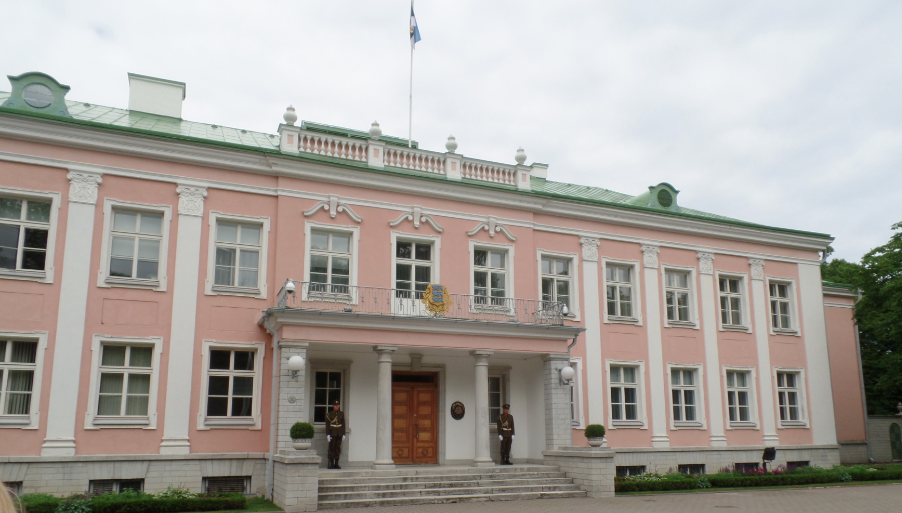
Estonia’s 1938 Presidential Palace is located, along with several other sites, in the Kadriorg Park District. Russia’s Tsar Peter the Great viewed the region as a pathway to the West. He had architect Niccolo Michetti design a sumptuous Baroque palace in 1718 as a gift for his wife to be used as a summer home for his family. He named the area after the Tsarina, Catherine, “Kadri” in the local language. The palace housed the president’s office in the 1930s and now exhibits foreign art from the 16th-20th-century. While the palace was being built the tsar stayed in a small cottage that is also open for tours and features some of Peter’s personal items.

Nearby is the architecturally spectacular KUMU Art Museum. The Art Museum of Estonia was established in 1919 and is now situated in a series of five museums, the most important of which is the KUMU. The limestone edifice is built into the encircling limestone cliff and was designated the “Museum of the Year” in 2008. On permanent exhibition is Estonian art from the 1700s to 1991.
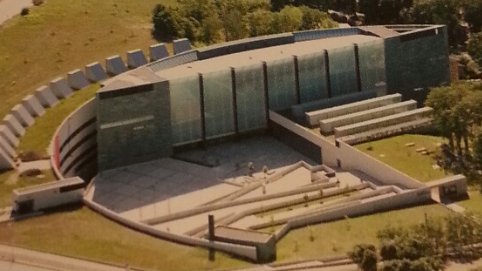
There are several experiential activities that are unique, fun and enhance your knowledge of the country. The 1,030-ft Tallinn TV Tower was constructed in 1980 for the Olympic sailing events and is a destination in itself. There is an interactive exhibition on the 21st floor, a Brasserie Restaurant on the 22nd floor and a 360-degree panoramic viewing platform. Opportunities to walk on the edge of the viewing platform tethered to the tower and to rappel down are adventurous options. While there you can record a greeting in the television studio and send it to a friend at home.
Another spectacular view can be obtained while 400-ft. aloft in the Balloon Tallinn. From the balloon’s gondola you can see the Old Town, City Center and Gulf of Finland. Some travelers will think the best thing about this experience is the fact that the balloon is stationary.
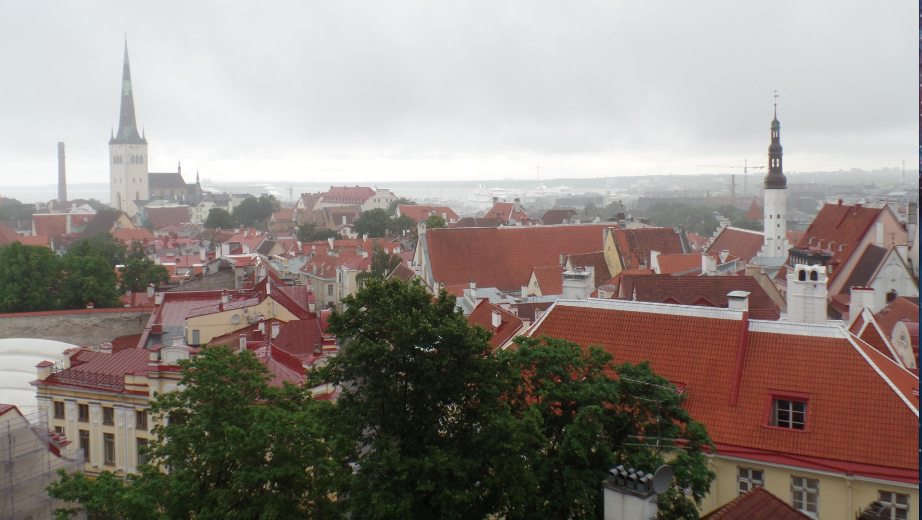
Marzipan is the world’s oldest candy with the first recipe being found in Persia in 800. In Estonia it was originally sold in pharmacies as a cure and was known as Martin’s Bread and only the wealthy could afford it. At Kalev Chocolate Shop and Master’s Chamber you can schedule a 2-hour Marzipan Workshop that includes ingredients, materials and tools along with lessons on the preparation of the marzipan from mixing to sculpture and painting. Kalev.eu/en
Lennusadam Seaplane Harbour is an award-winning maritime museum housed inside Seaplane Hangars built 1916-17 as part of Russia’s naval defenses. There are more than 60 exhibit areas on three levels. Level one represents the air 59-ft above sea level, two the water’s surface and three underwater, each with appropriate sound effects. Special attractions include the Lembit, a pre-WWII submarine that was used for 75-years, a surviving wreck from the 1500s and a variety of interactive exhibits. The hangars were constructed with walls 1-ft. thick at the base, 1.2-inches at the top and no support beams in the middle to facilitate moving seaplanes in and out. It is the sole seaplane museum in the world and well worth a visit.
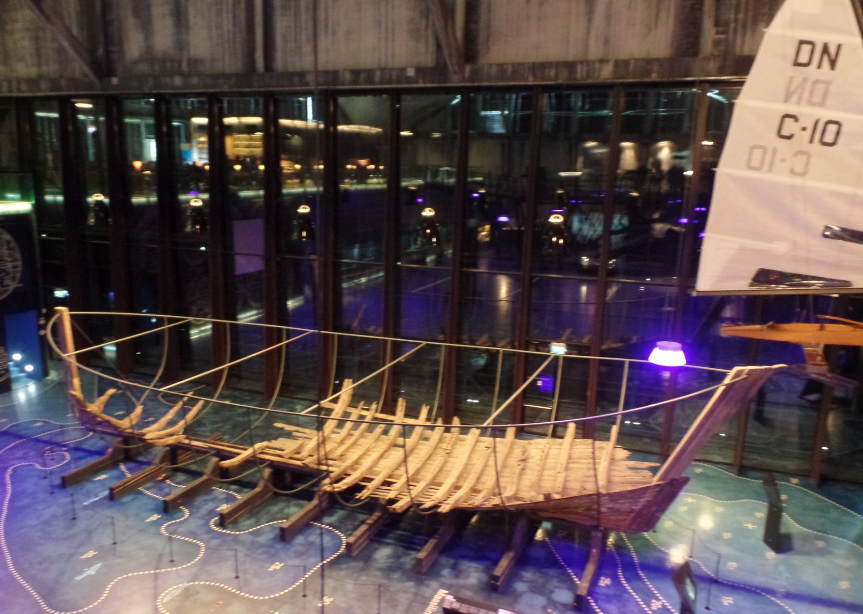
In 2003 Estonia’s National Song and Dance Festival earned a place on the UNESCO Oral and Intangible Heritage list. Song festivals have been part of Estonian culture since 1869 and they continue to be held every five years. The Song Festival Grounds open-air amphitheater was built in 1959. The grounds can hold 75,000 in the audience and 15,000 onstage. The facility is also used for concerts, the largest of which was Michael Jackson.
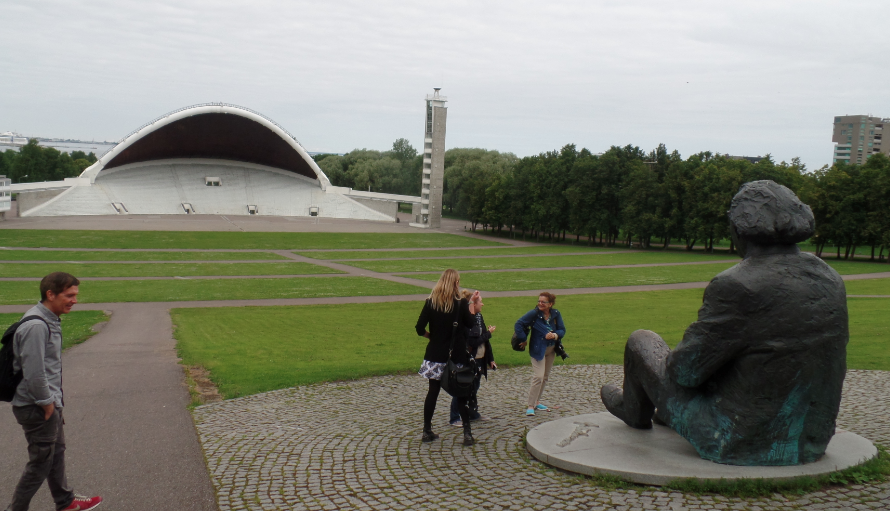
Estonia is comprised of more than 1,500 islands many accessed by ferry and, in winter, the 19-mile longest ice road in Europe. The 7th largest of these islands, Kihnu, preserves traditional cultural and the marriage ceremony was designated a UNESCO Masterpiece of the Oral and Intangible Heritage of Humanity in 2003. Archeological finds point to habitation as early as 3,000-years ago but the first documented record of “Kyne” was in 1386. It appears to have always been home to seal hunters and fishermen and because the men were often away at sea women were the keepers of the culture and heritage and continue daily to wear folk costumes, create traditional woolen handicrafts and perform traditional dances and music. There are 4 villages on the 5-mile long, 2-mile wide, island.

Important sites on the island include the Kihnu Museum, Lighthouse and 18th-century Russian Orthodox Church. The museum provides a wonderful overview of the island through videos, dioramas, textiles, artifacts and textiles. The church is located directly across the road from the museum. Guided tours of the island can be scheduled and can include a home visit and catering.
Estonian restaurants serve traditional fare with fresh, organic, local ingredients and vegetarians and vegans have no difficulty finding a great meal here. Many of the dishes incorporate country favorites such as nettles, sorrel, dark Estonian rye bread, juniper butter and mushrooms. You have to work hard to find a bad meal.
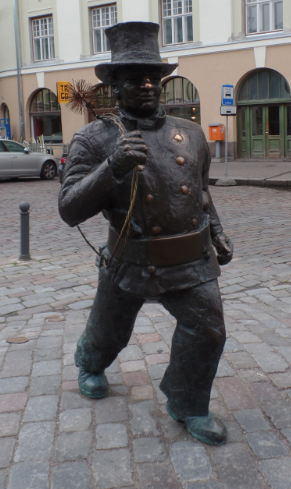 The Savoy Boutique Hotel, built in the 1890s, was renovated in 2006 and deftly blends the historic and the modern. The 40 guestrooms provide all the standard amenities and breakfast and business services are offered. The Savoy is ideally situated at the entrance to the Historic District making it a short walk to all the major sites and attractions. savoy-boutique-hotel.tallinhotel.net/en
The Savoy Boutique Hotel, built in the 1890s, was renovated in 2006 and deftly blends the historic and the modern. The 40 guestrooms provide all the standard amenities and breakfast and business services are offered. The Savoy is ideally situated at the entrance to the Historic District making it a short walk to all the major sites and attractions. savoy-boutique-hotel.tallinhotel.net/en
Standing on the sidewalk in front of the hotel is a life-sized statue of a smiling chimney sweep. Chimney sweeps continue to wear 19th-century work outfits and to rub a button on their coat is believed to bring good luck. If you fail to see one walking around you can always rub the buttons of the bronze sweep in front of the hotel.
You won’t need luck in the second part of our trip as we head out to Latvia next week with a few stops along the way. www.visitestonia
I wish you smooth travels!















Leave a Comment